Mr. Qi Gong's "Notes on Calligraphy" said: "Running script should be written in regular script, and its positions should not be lost until it is gathered and scattered. Regular script should be written in running script, and its dots and strokes should be focused before it is rigid." This sentence is based on the relationship between regular script and running script. , profoundly revealed the writing rules of the two fonts, running script and regular script. Only in the form of notes, Mr. Qi Gong did not give a detailed and in-depth explanation. For the convenience of writing and discussion, the author would like to talk about the understanding of "regular script should be written in line" based on the learning of regular script and some issues derived from it, so as to seek advice from all the experts.
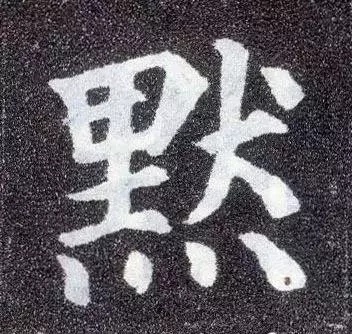
1. Analysis of “regular script” and “running script”
Chinese characters are the crystallization of the collective wisdom of the Chinese nation. Compared with the Chinese language, it resorts to tangible visual symbols for content that was originally transmitted orally and aurally, truly expanding the time and space dimensions of exchange of ideas and information, and making a huge contribution to the inheritance and development of Chinese culture. Over thousands of years, although there have been many different methods such as engraving, casting, and printing, in general, the social functions of Chinese characters are mainly realized through writing. The organizational structure of Chinese characters interacts with various means of expression, mainly writing, and is also affected by factors such as the times, uses, occasions, etc., resulting in many fonts that mark the major types and general styles of Chinese character shapes.
On the surface, various fonts have clear connotations and clear boundaries. However, due to the different naming angles of various fonts, there are also intricate relationships between fonts. Therefore, we first need to determine the meaning of "regular script" and "running script" in order to understand the reason why "regular script" and "running script" are mentioned together in the article, and to deeply examine the precise meaning of "regular script should be written in line". Professional academic research has countless definitions of "regular script" and "running script", and has revealed the essential attributes of the two fonts from different levels and aspects. However, Mr. Qi Gong used these two concepts in his notes without any other explanation. To explain, I probably adopted the understanding most familiar to most people. Check out the "Modern Chinese Dictionary" as follows:
Regular script: Chinese character font, which is the current popular handwritten traditional Chinese script. It evolved from official script. Also called regular script and real script.
Zhengti characters: Characters whose form conforms to the standard.
Running script: Chinese character font, the shape and style are between cursive script and regular script.
Cursive script: Chinese character font, characterized by connected strokes, making it fast to write.
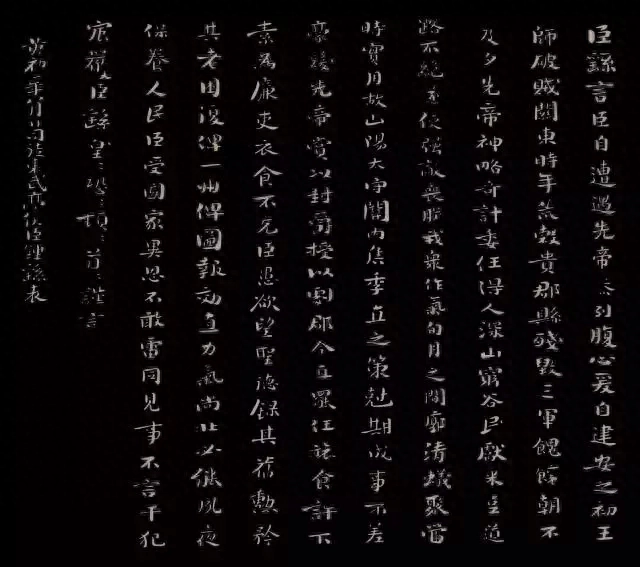
By cross-referencing with the explanation of "Zhengti characters", we can see that "regular script" refers to a font that pays attention to formal specifications in writing. The so-called "standard" mainly means that the shape conforms to the regulations. Of course, in order to achieve the purpose of communication, striving for standardization should be a common requirement for all fonts. However, in order to ensure the attributes of "regular script", the strokes of "regular script" should not be connected to each other, otherwise it will cause differences in the inherent stroke form and even the entire glyph structure. After comparing with the characteristics of cursive script that "the strokes are connected and write quickly", this characteristic of regular script can be verified. As for running script, because it is "between cursive script and regular script", it is neither "connected" like cursive script, nor completely disconnected like regular script, thus ensuring that the Chinese character form is easy to read and write.
The art of calligraphy is expressed in Chinese character writing, and the discussion of calligraphy art also follows some basic requirements of Chinese character writing. However, as two side-by-side fonts, if regular script is written as running script, it can certainly achieve the purpose of "dot painting" and "not being rigid". Wouldn't regular script dissolve its own characteristics and become a vassal of running script?
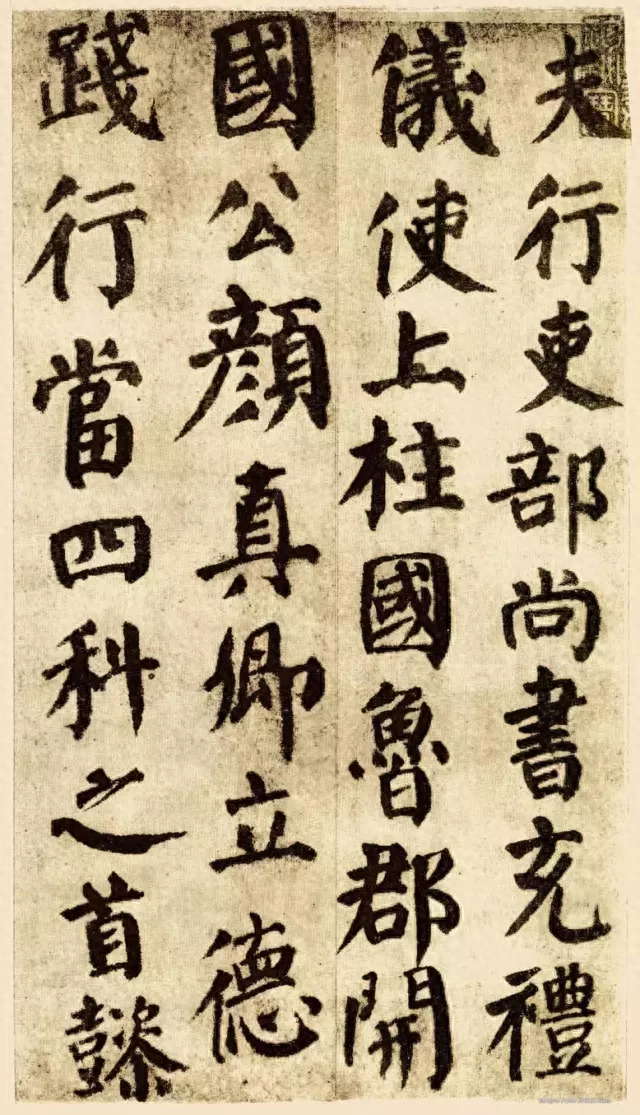
2. The deep meaning of “regular script should be written in line with the law”
As font names, "Kaishu" and "Xingshu" both refer to the form of Chinese characters after writing. In the discussion of "regular script should be written in line", the process of "writing" is particularly noteworthy. When it comes to writing Chinese characters, people often think of the following three issues: For example, at the stroke level, you need to make paper input movements from the upper left where you start the pen, and then move to the right, downward, lower left, lower right, or upward. The upper-right strokes form basic strokes such as horizontal, vertical, left, N, and T [6]; single Chinese characters mostly follow the rules of first horizontal and then vertical, first left and then N, from top to bottom, from left to right, first outside then inside, first The outside and then the inside are sealed, and the stroke order is first in the middle and then on both sides; as for the composition, single characters are mostly formed into a line from top to bottom, and the lines are arranged from right to left, etc., thus providing a way for the use of Chinese characters. and the writing procedures that must be followed. If summarized, all the above steps are the process of friction between writing tools and paper to form strokes. In order to complete writing smoothly, the brush needs to transition to the next stroke after leaving the paper. When we connect the writing and connecting links of strokes, the writing process appears as a continuous linear feature.
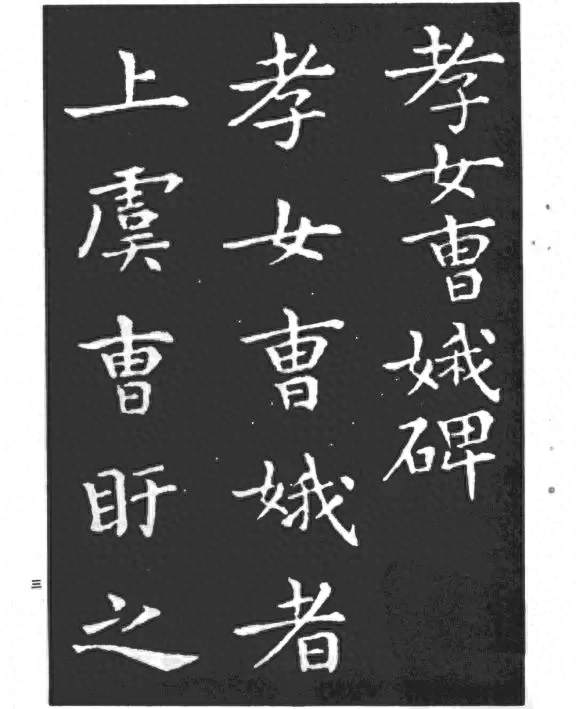
The linear feature is subject to the writing premise that the right hand controls the writing instrument, and is also subject to the arrangement rules of Chinese characters as information communication symbols. Although the linear feature is derived from the daily writing of Chinese characters, it is fully valued and applied in artistic creation. Therefore, excellent works in regular script or running script should be connected front and back, connected up and down, and even a harmonious whole full of flesh and blood. It should show the rich changes of square and circle, hidden exposure, straight and straight, lifting and pressing, pitching and rapid relaxation. Of course, in running script, due to the "connection of strokes", even the connecting links will leave corresponding traces on the paper, making the characteristic of "stippling without dullness" particularly obvious. In this sense, although the discussion of "regular script should be written in line" uses the most familiar concepts and explanations, it reveals the linear characteristics of Chinese character writing and touches on the exploration of deeper rules in calligraphy creation.
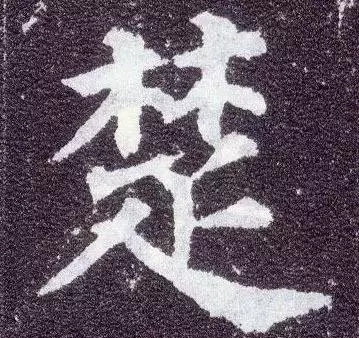
3. The historical background of “regular script should be written in regular script”
Calligraphy works are expressed as two-dimensional plastic arts, but their dynamic generation process is expressed as a linear sequence. Between the two, the linear order provides the rationale for the dynamic generation of the work, and the work provides the space for the linear order to be displayed. This characteristic of calligraphy art makes it essentially different from other graphic arts. In regular script, the link between strokes is relatively implicit, and each stroke appears to be inconsistent on the surface. However, the work of Zhong Yao, the "originator of regular script", was praised by later generations as "turning vertically and horizontally" [10]. It can be seen from this that since the art of calligraphy became self-conscious, calligraphers have paid attention to the exploration and application of linear features. The subsequent elaboration and discussion may use different conceptual names, but it is a fact that the exploration of issues related to linear writing exists.
It should be noted that these problems arising from the creation of works involve a series of methods, laws, ideas and concepts in calligraphy creation. Many of the details are difficult to describe in detail in words, and in the absence of modern audio-visual equipment, they need to be accompanied by accurate on-site demonstrations or appropriate illustrations. However, in a social environment that emphasizes inheritance from teachers and family inheritance, most of these issues are regarded as "secrets that are not passed down". Even if there are occasional summaries in a few words, they are only spread within a very small range. As for other people, in addition to relying on their own writing practice to explore, more need to obtain it through abnormal means. Because it is different from illegal money-making, the records in the classics about Zhong Yao and others secretly earning calligraphy skills have been fully precipitated and purified into a good story in the history of calligraphy.
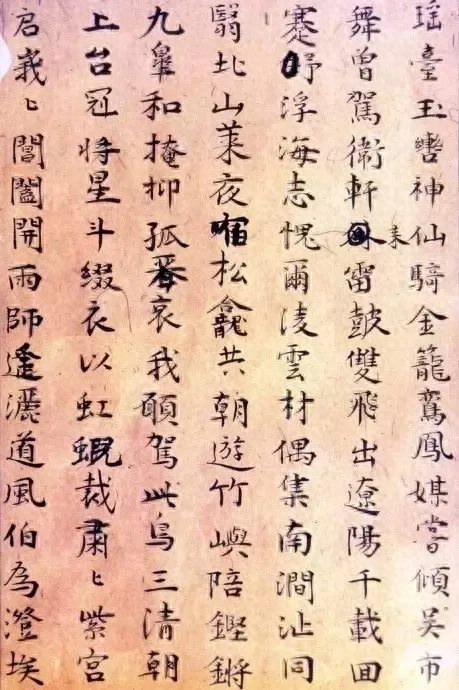
After about the middle of the Qing Dynasty, influenced by the practical writing requirements such as "Shan Shi Guange Shu" and the focus on perspective in epigraphy research, a domino effect in the field of writing gradually occurred. First, he focused on the external form of the handwriting after the writing was completed and ignored the connection between the strokes. Then he separated each stroke that was originally connected into an isolated unit. Finally, he gradually gave up on the linear handwriting that he originally relied on. Discussion on the rules [11]. Therefore, in the eyes of scholars at the end of the Qing Dynasty, Tang regular script became "cutting cranes and continuing ducks" [12] that focused on plane structure and stroke form. As for the "steleology" movement that adopted the Fabei stele, it was ostensibly to correct the "decline of the times". The current writing situation of "Guange Shu" has actually further intensified this trend. Later, with the fall of the feudal dynasty and the abolition of the imperial examinations, the trend of advocating the vernacular, the pinyinization of Chinese characters, and even the direct abolition of Chinese characters continued to emerge. A series of strict training measures were gradually ignored and forgotten, resulting in people's understanding today compared with those in the late Qing Dynasty. There are not many breakthroughs, so the difficulty of investigating the dynamic creative process is conceivable.
Mr. Qi Gong relied on his rich knowledge and profound writing practice to accurately understand the importance of issues related to linear writing. So, although "regular script should be written in regular script" is not his personal original idea, the proposal of this theory will help restore the original state of Chinese character writing, thereby playing an inspiring role in correcting the misunderstanding of regular script creation.
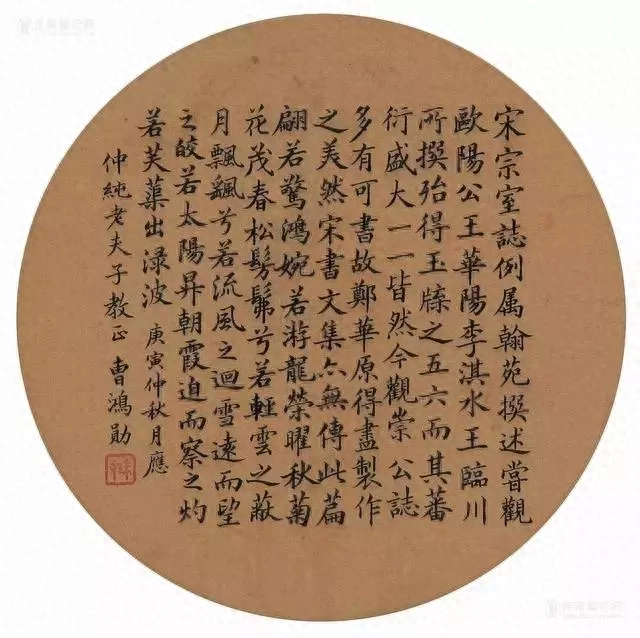
4. Let’s start from the saying that “regular script should be written in regular script”
"Regular script should be written in line" refers to regular script in which the strokes are not connected. In fact, in addition to regular script, there are also seal script, official script and other fonts whose strokes are not connected. Today, when we look back at the exploration of seal and official script creation in the history of calligraphy, it also coincides with the idea that "regular script should be written in a regular way".
Probably since the creation of Chinese characters, the behavior of writing Chinese characters has appeared, and naturally, the exploration of the rules of writing Chinese characters has also begun. But it was not until the Wei and Jin Dynasties, with the popularity of regular script, running script and cursive script, that the art of calligraphy that people were accustomed to understanding gradually became more conscious. As for seal script and official script, they were mainly used in the era before this. Judging from the calligraphy that has been passed down to this day, we have accumulated a wealth of writing experience at that time. However, due to the lack of conscious organization and summary, later generations did not have many written records for reference when caring about the creation of seal scripts. Taking seal script as an example, due to the rounded and slender external shape of small seal scripts carved on stone in the Qin Dynasty, calligraphers have been using the methods of burning, binding and bare brushes for a long time. Since Deng Shiru emphasized the use of "official pen" to write seal scripts, calligraphers such as Xu Sangeng, Yang Yisun, Wu Xizai, Wu Dacheng, Zhao Zhiqian, and Wu Changshuo have insisted on exploring smooth writing styles, and have truly broken through the bottleneck of difficult operation in seal script creation.
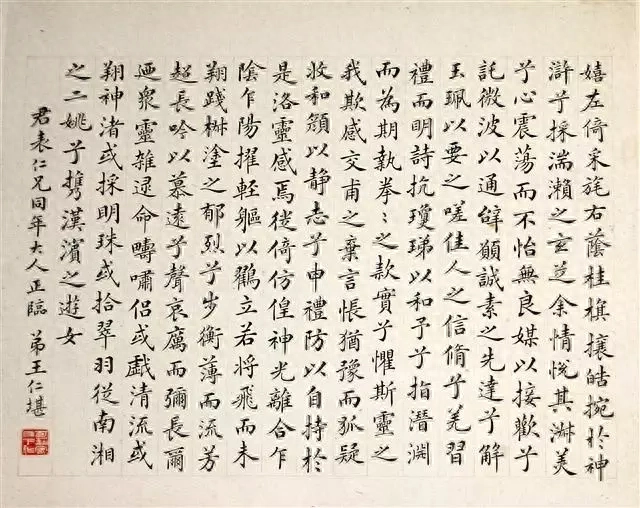
It can be seen that the linear order reflected in "regular script should be written in line" reveals the common requirements of all Chinese character writing, and has direct inspiration for the calligraphy creation of any font. It is based on examining the dynamic generation process of calligraphy works. It aims to obtain consistent methods, rules, thoughts and concepts when writing Chinese characters through the ever-changing external forms, and strive to make calligraphy works full of vitality and vitality. In this sense, the investigation of issues related to linear writing has formed a continuous calligraphy tradition, supporting the emergence and development of calligraphy art. In turn, people have spread their exploration into various fonts and eras, nourishing countless calligraphers and creating countless fine calligraphy works. I think this is the practical significance of Mr. Qi Gong’s suggestion that “regular script should be written in regular script”!
Of course, calligraphy tradition has extremely rich connotations and numerous contents. In addition to the related dynamic writing issues involved in "regular script should be written properly", it is also necessary to pay attention to the use of dots, structure and momentum in calligraphy works after the writing is completed. The arrangement of the legal layout. In this regard, the author will extend the discussion to Mr. Qi Gong’s saying that “running script should be written in regular script”!
("Chinese Calligraphy" Issue 2, 2014)
Thoughts on calligraphy
Articles are uploaded by users and are for non-commercial browsing only. Posted by: Lomu, please indicate the source: https://www.daogebangong.com/en/articles/detail/qi-gong-kai-shu-yi-dang-hang-shu-xie.html

 支付宝扫一扫
支付宝扫一扫 
评论列表(196条)
测试